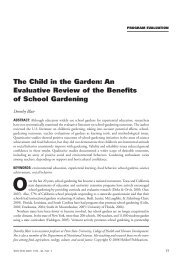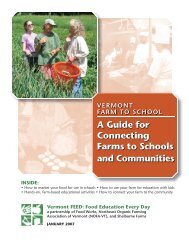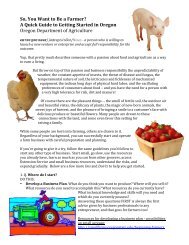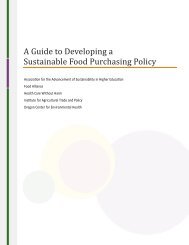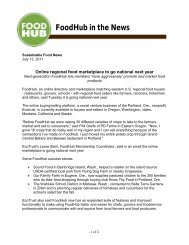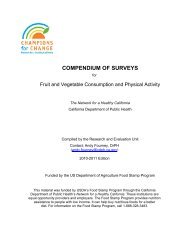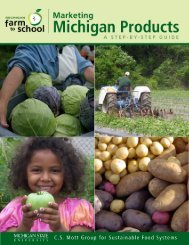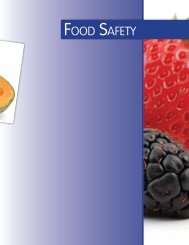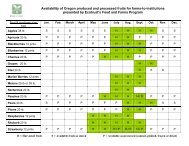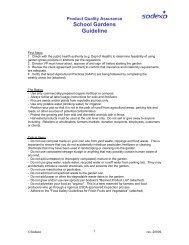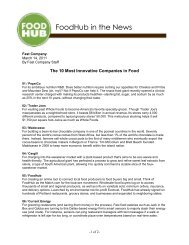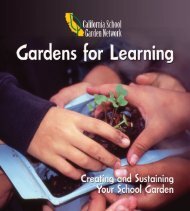eval report cover.indd - New Jersey Farm to School Network Wiki
eval report cover.indd - New Jersey Farm to School Network Wiki
eval report cover.indd - New Jersey Farm to School Network Wiki
Create successful ePaper yourself
Turn your PDF publications into a flip-book with our unique Google optimized e-Paper software.
DWM-CA: DAVIS JOINT UNIFIED SCHOOL DISTRICTFOOD WASTE DIVERSION PROJECT, CALIFORNIADavis Joint Unified<strong>School</strong> District, CAFree / reduced mealeligibility: 15.9%Total schools: 16Enrollment: 8537Demographics:64.7% White, 14.2% Asian,13.6% HispanicOther program components:Vermi-composting, composting,food rescue, offer versus serveplan in cafeteria, replacement ofpolystyrene lunch trays with moldedfi b er trays, links with curriculum,operational farm <strong>to</strong> school salad barsThe Davis Joint Unifi e d <strong>School</strong> Districtpiloted food waste composting systemsat three elementary schools (Birch Lane,Cesar Chavez and Pioneer) in the 2000-01 schoolyear. At the cafeterias in all the district schools,including these three, students could choose ahealthy farm <strong>to</strong> school lunch option, includingplenty of fruits and vegetables. Providing studentswith a choice of foods can itself reduce food waste.Th e goal of the project was <strong>to</strong> reduce the lunchwaste stream and in particular reduce food waste,while engaging students in the ongoing practiceof composting and recycling. Th e project was createdby the Davis <strong>Farm</strong> <strong>to</strong> <strong>School</strong> Connection.At the three school sites, three diff e rent methodsof composting food waste and reducing other portionsof lunch waste stream were implemented, inorder <strong>to</strong> better understand which would be mostappropriate for the schools’ needs and resources. Lunch waste audits were conducted at allthree sites at the beginning of the project.Establishing a team of teachers, parents and students at each school was the first step ininitiating this program at schools. Successful implementation was also a result of trainingsconducted for staff, teachers, parents and students throughout the project, integrating thecomposting in<strong>to</strong> the curricula, assessment of results and outreach in the community. Theproject received support from the California Integrated Waste Management Board and wassupported by interested teachers, parents and volunteers.Two of the three school sites showed a reduction in the food waste stream. The data fromthis study was only available for the initial year of the project.Havstad Cynthia and Wheeler Lynn, Davis Joint Unified <strong>School</strong> District Food Waste Diversion Project FinalReport, 2001.Conclusions <strong>Farm</strong> <strong>to</strong> <strong>School</strong> and Program RecommendationsProfileswww.farm<strong>to</strong>school.org 69



